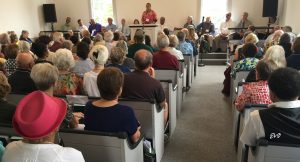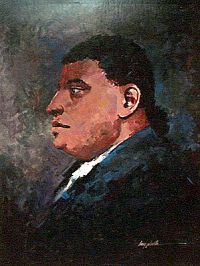By Richard Gifford
Capt. Pardon Cook (1792-1849) Son-in-law of Paul Cuffe, resided on Drift Road, Westport. Whaling captain, commanded the June and Elizabeth. An 1843 profile in The Liberator stated that Cook disproves “the charge of his being indebted for his abilities to any white blood he possesses, for few are darker than he. He has performed three voyages from Westport as a master, and in every instance has succeeded in making good voyages, better than any other vessel from the same place, considering the amount of capital invested.”
Nathaniel A. Borden (ca. 1805-1851). Brother-in-law of Pardon Cook, lived at 26 Wing Street, New Bedford. In 1839 Borden likely became the first African-American candidate for any state elective office. The recently arrived Frederick Douglass paid the $1.50 poll tax to cast his first vote for Borden.

